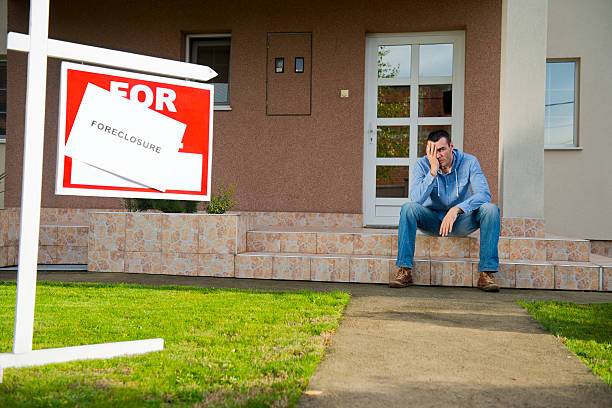When your home listing expires, it can be confusing to know what to do next. Sellers often wonder if they should relist right away or wait. Making the wrong choice could affect how buyers see your property.
If you relist too soon, buyers may notice and think you’re desperate. This could lead to fewer offers or lower prices. Rushing can also repeat the same mistakes that caused the listing to expire.
The best answer is to wait about 30 days before relisting, but the right timing depends on your local market and your home’s unique situation. During this time, you can review what went wrong and make important changes. This blog will guide you step-by-step so you can relist at the perfect time and get the best result.
Key Takeaways
- Most experts recommend waiting at least 30 days before relisting to refresh buyer interest and MLS visibility.
- Local MLS rules often require a waiting period between 7 and 30 days after expiration before relisting is allowed.
- Relisting too soon, especially within a week, rarely changes results and may harm buyer perception of the property.
- Avoid relisting during periods of low buyer activity, such as major holidays or slow market seasons, for better results.
- Use the waiting period to improve listing photos, update descriptions, and adjust pricing or marketing based on feedback.
Understanding Expired Listings
An expired listing means your home did not sell in the time you agreed on with your agent. This gives you a chance to review what went wrong and plan your next steps.
You should start by looking at market data. Compare your home’s price, days on market, and buyer interest with similar homes. If your home was priced too high, fewer buyers may have shown interest. Consider the advantages of selling as-is to avoid making repairs or upgrades before relisting.
It also helps to review your home’s staging. Professionally staged homes often sell faster. If your home was not staged well, consider making improvements before listing again.
If you are selling under unique circumstances, such as a land contract, it is especially important to review your contract terms and consult a real estate professional before relisting.
Common Reasons Listings Expire
You’ll often see listings expire due to pricing missteps or weak marketing tactics. Data shows overpriced homes linger on the market, while poor promotion limits buyer exposure. To increase your chances next time, you need a pricing strategy backed by market analysis and a targeted marketing plan.
Another common reason listings expire is a lack of fair cash offers that reflect the true value of the property and meet sellers’ needs. It’s also important to consider working with local North County buyers who understand the area and can provide direct offers without involving agents or commissions.
Pricing Issues and Strategies
Pricing is the main reason most property listings expire. If a home is overpriced, buyers often lose interest quickly. Even a price just 5% above the market can cut showings in half.
Sellers should use recent sales to set a realistic price. Agents must give a clear market analysis and honest feedback. This helps you make smart choices about your listing.
Open houses can show if buyers like the price. If few people visit or mention price concerns, consider a quick adjustment. Adjusting your price quickly can help prevent another expired listing.
Choosing a price based on data and staying open to feedback brings in more buyers. Good communication with your agent is key. This approach gives your home the best chance to sell.
Ineffective Marketing Approach
An ineffective marketing approach can make your listing easy to overlook. Buyers today want more than simple photos and descriptions. Modern marketing tools are needed to capture attention.
Virtual staging helps homes sell up to 75% faster. Drone photos can increase views by 68%. These tools make listings stand out in a crowded market.
If your past marketing did not use these methods, your property may seem less appealing. You should review your marketing strategy before relisting. Investing in high-quality photos, virtual staging, and drone shots can boost buyer interest.
Assessing Market Conditions
Assessing market conditions helps you decide the best time to relist your property. Real estate trends change quickly, so timing is important. If you study current data, you can plan for a quicker and better sale.
Current market demand shows how many buyers are active. If recent sales are high and homes sell fast, demand is strong. Strong demand can help your property sell faster. Sellers taking advantage of no-obligation cash offers may find it easier to move quickly in a hot market.
Seasonal trends affect when buyers are most active. If you relist during a busy season, you may get more interest. Study past data to find these peak times.
Inventory levels tell you how many homes are for sale. If inventory is low, sellers have an advantage. A low supply often means more competition among buyers.
Interest rates can impact buyer activity. If rates are low, more people may want to buy. Watching rate changes can help you choose the right time to relist.
If you use these factors, you can improve your chances of a successful sale. Proper timing can help you get better offers. Always base your decision on clear market data. For homeowners considering an as-is home sale, understanding market conditions is especially important since pricing and demand may differ from traditional listings.
Evaluating Feedback From Previous Showings
Evaluating feedback from previous showings helps you understand how buyers see your home. It also reveals why some buyers may not make an offer. You can use this information to decide what changes are needed.
Review comments from open houses and tours to spot repeated concerns. If many buyers mention outdated décor, consider updating your home’s style. If curb appeal is an issue, improve your landscaping or front entry. Sometimes, sellers find that no repairs, tenant issues, or escrow delays are needed, which can make the process much smoother.
You can use a simple chart to turn feedback into action steps. For example, if buyers dislike the staging, hire a professional stager. If pricing is a problem, discuss a new price with your agent.
It’s also important to address any disclosure requirements that may have come up in feedback, as buyers appreciate transparency about your property’s condition.
The Role of Listing History and Buyer Perception
Listing history affects how buyers view your property. Frequent relisting can make buyers worry something is wrong. They may think there are issues with price, condition, or the seller’s motivation.
Buyers often notice how many times a home has been listed. They also look at changes in showing schedules and price adjustments. Long market times can make buyers cautious. Working with trusted cash home buyers can help sellers avoid long market times and repeated listing cycles.
The National Association of Realtors found that homes with several listing cycles get fewer showings and lower offers. If you manage your listing history carefully, you can attract more buyers. You will also have a stronger position when negotiating.
Choosing a fast, effortless process with a local cash home buyer can help you avoid negative buyer perceptions by reducing time on the market and eliminating repeated listing cycles.
Timing and Seasonal Considerations
You need to assess current market slowdowns before relisting to avoid unnecessary delays. Data shows that listings launched during peak seasons consistently attract more views and higher offers. Don’t overlook the negative impact of holiday lulls, as buyer activity typically drops and can lengthen your time on market.
For sellers dealing with special circumstances, timing your relist and clear communication can be even more critical to attract the right buyers. If you’re hoping for a fast, effortless process, consider companies that make fair cash offers and allow you to choose your own closing date.
Evaluating Market Slowdowns
Market slowdowns usually happen at certain times of the year. Knowing these periods helps you choose a better time to relist your property. If you avoid slowdowns, your home may sell faster.
You should check past sales numbers for each month to see when buyers are most active. Local job rates and business news can show if people feel confident about buying. If interest rates go up, you may see fewer buyers.
Holidays and school changes often mean buyers are less active. If you wait until after these periods, you may get more interest. Always use local information to guide your timing.
Capitalizing on Peak Seasons
Peak seasons help homes sell faster and for better prices. Relisting during these times increases the number of buyers who see your property. If you want maximum offers, use peak seasons to your advantage.
Spring is usually the best time to list because buyer interest is highest. Homes sell quickly and often at higher prices. Summer also brings strong buyer activity, but slightly less than spring.
Fall and winter see fewer buyers and longer selling times. If you must list in these seasons, expect your home to stay on the market longer. Always check local trends before choosing your listing time.
If you time your listing well, you can get better results. Use the table below to help plan your next move. Proper timing may lead to a faster and more profitable sale.
Avoiding Holiday Listing Lulls
Avoiding holiday listing lulls means not listing your home during major holidays. Fewer buyers look for homes during these periods. This can reduce your chances of getting good offers.
Buyer interest drops during holidays because people are busy traveling or spending time with family. If you list your home during these times, you may get fewer showings. Competing listings may also sit on the market, making the market seem slow.
Homes that stay listed longer can lose value in the eyes of buyers. If you wait until after the holidays, you could see more buyer activity. Relisting right after a holiday often attracts new interest and more showings.
Plan your listing around busy times in the market for the best results. Avoid listing during major holidays if possible. This approach can help you sell your home faster.
Minimum Waiting Periods Recommended by Experts
Experts recommend waiting before relisting a property to avoid hurting its value or buyer interest. The minimum waiting period is usually 30 days. This pause helps refresh demand and reset the home’s image.
If you relist within a week, you may see little change in activity. Homes that wait 30 to 60 days often get more attention. Updated photos and open houses during this time can help. Taking advantage of a fast and effortless selling process may be beneficial if you want to avoid the waiting period and traditional listing hassle.
Use the waiting period to review feedback and improve curb appeal. Sellers can also update their marketing strategy. If you take this break, your home may make a stronger impression when it returns to the market.
If you’re looking for a faster solution, you might consider fair cash offers from local buyers who purchase homes as-is, since this can help you sell without waiting for the traditional relisting period.
How MLS Rules Affect Relisting Timeframes
You need to factor in your local MLS’s listing reactivation period and mandatory waiting intervals, as these rules directly control when you can relist a property. Data shows that waiting periods and reset requirements vary significantly by region, so you can’t rely on a one-size-fits-all approach.
Knowing your MLS’s specific policies lets you time your relist strategically for maximum market impact. If there are multiple owners on the deed, it’s also crucial to ensure all parties agree before relisting, as legal requirements for co-owners may impact your timeline.
MLS Listing Reactivation Period
The MLS has rules that control when you can relist a property after it expires. You must follow these rules to avoid issues. Understanding the reactivation period helps you plan your next steps.
Most MLS systems require you to wait a set time before relisting. If you try to relist too soon, your options may be limited. The waiting period prevents duplicate listings and keeps the system fair for everyone.
Penalties can apply if you do not follow these rules. The MLS keeps a record of each property’s listing history. If you break the rules, your listing’s credibility could suffer.
Mandatory Waiting Intervals
MLS rules set a waiting period before you can relist a property. This period usually lasts from zero to 30 days after a listing expires. The rule prevents agents from resetting the “days on market” count right away.
You should check your local MLS rules for the exact waiting time. If the waiting period applies, use it to update your property’s presentation. New photos or virtual tours can help your listing stand out.
Many buyers notice when a property looks fresh after relisting. By following the MLS rules and improving your marketing, you increase your property’s chances. This approach can help you avoid penalties and attract more interest.
Rule Variations by Region
Regional rules can change how long you must wait to relist a property on the MLS. Each MLS may set different requirements. If you want to relist, you must follow your local MLS rules.
Some regions have a 30-day waiting period, while others allow relisting after 7 days. The definition of “expired listing” can also differ from one area to another. These differences affect when and how you can relist.
Local brokerages may add their own rules on top of MLS policies. State laws might override both MLS and brokerage rules. If state laws apply, you must follow those rules first.
Making Strategic Repairs and Improvements
Before you relist your property, make focused repairs and upgrades to attract buyers and get a better price. Simple fixes, like fresh paint or new fixtures, often give a high return. If you improve key areas, you could increase your home’s value.
Curb appeal matters. Landscaping, painting the front door, or fixing the exterior can raise your sale price by up to 7%. Well-kept exteriors make your home stand out to buyers.
Inside, remove clutter and consider staging your property. Staging helps buyers imagine living in the space and can shorten selling time. If buyers see a well-maintained home, they are more likely to feel confident about their purchase.
Refreshing Your Marketing Approach
You need to update your listing photos, revise your property description, and improve your online presence to capture renewed interest. Data shows that refreshed visuals and targeted descriptions can increase click-through rates by up to 60%. Take a strategic approach to marketing so your property stands out in a crowded market.
Updating Listing Photos
Fresh listing photos are important when updating your property online. New images help your home stand out to buyers. If you reuse old photos, buyers may think the property is not selling.
High-quality photos can make your home sell faster. If you use virtual staging, buyers can imagine different ways to use each room. Drone photos can show the size of your lot and where it is located.
Schedule photo shoots during the day when the light is best. If you update the exterior photos, make sure they show the current landscaping. These steps can make your home look more appealing to buyers.
Revising Property Description
Revising your property description can quickly make your listing more attractive to buyers. Updated descriptions often lead to more inquiries and visits. If you want better results, consider highlighting what makes your property stand out.
Unique features and recent upgrades should be clearly mentioned. You can add details about virtual staging or new photos if the home’s look has changed. Modern touches help buyers picture themselves living there.
It is important to include information about upcoming events, like an open house. This can create urgency and increase visitor numbers. If you mention these events, buyers may be more likely to act quickly.
Use keywords that match what buyers want in your area, such as “move-in ready” or “walkable neighborhood.” Energy-efficient details can also attract attention. A well-written description will help your home compete in a busy market.
Enhancing Online Presence
A strong online presence is necessary to attract serious buyers. If you are relisting after an expired listing, update your digital strategy. Modern visuals and clear content help your property stand out online.
Virtual staging can show buyers your property’s potential. If you use this method, it can help buyers picture themselves living there. Emotional connections often lead to more interest.
Drone photography offers unique views of your home and neighborhood. These images make your listing look more professional. Buyers may pay more attention to listings with drone photos.
Social media advertising lets you reach specific groups of buyers. If you run paid campaigns, more people will see your listing. This can drive extra traffic to your property page.
SEO-optimized listings can increase your property’s search ranking. If your descriptions use the right keywords, buyers will find them more easily. Clear, search-friendly text helps you stand out online.
The Importance of Professional Photography
Professional photography is important because it makes your property look its best. Good photos grab buyers’ attention and help your listing stand out. If you want more interest, use high-quality images.
Listings with professional photos can get up to 61% more views. A real estate photographer knows how to use lighting and angles. If you rely only on smartphone photos, your property may not get noticed.
Professional photos boost listing views by up to 61%—don’t let smartphone images hold your property back from getting noticed.
Virtual staging can help buyers see a home’s potential, especially if the space is empty or outdated. Drone photography can show the lot size and local amenities. If you want a quicker sale, use these tools for better results.
In a crowded market, strong images are essential. Properties with great photos often sell faster and for more money. If you invest in professional photography, you increase your chances of success.
Choosing the Right Real Estate Agent
The right real estate agent helps sell your home faster and for a better price. If you are relisting, you need someone skilled with proven results. An expert agent uses data and effective strategies to attract buyers.
A good agent knows how to stage your home so buyers can picture living there. The National Association of Realtors says 83% of agents find staging helps buyers visualize the property. If you want the best result, choose someone who understands staging well.
Look for an agent with a track record of successful relists in your area. The agent should plan open houses that reach serious buyers. Strong communication and a marketing plan based on data are also important.
Your choice of agent can decide how quickly and successfully your home sells. If you choose carefully, you improve your chances for a good sale. The right agent makes a big difference.
Pricing Strategies for a Successful Relist
To price your home well when relisting, you must use current market data and understand buyers’ mindset. Check recent sales of similar homes to find a fair price range. If you rely only on your old listing price, you might miss new market trends.
A market comparison helps you see how your home compares to others nearby. Consider your home’s condition, location, and any updates. If you price your home a little below others, you could attract more buyers and even get multiple offers.
Overpricing often causes listings to sit unsold and lose buyer interest. Set a price that matches your home’s true value and local demand. This approach gives your property the best chance to sell quickly and for a good price.
Monitoring Competing Listings in Your Area
To price your home well, you must watch similar listings in your area. Competing listings show what buyers want and expect. This helps you set a fair and attractive price.
Check the listing prices and recent sales of similar homes. If you see homes with good staging or virtual tours, note those details. These features can help a home sell faster.
Track how long other homes stay on the market. If homes sell quickly, your area might be in high demand. Also, look for any incentives or upgrades sellers offer.
If you stay informed about local competition, your relist will be more competitive. Up-to-date knowledge helps you make smart decisions. Your home will stand out to buyers if you use this data.
Conclusion
If you wait at least 30 days before relisting after an expired listing, you can improve your chances of selling. This break gives you time to review feedback and adjust your strategy. If you use this pause wisely, your property can attract more buyers.
When you relist too soon, the listing may appear stale to buyers and agents. If you want to create fresh interest, consider making updates before putting the home back on the market. If you need to sell quickly, you have other options.
If you want a fast and hassle-free sale, we buy houses for cash at Freedom Path Investors. If you’re ready to move forward, contact us today. We are here to help you get started.








